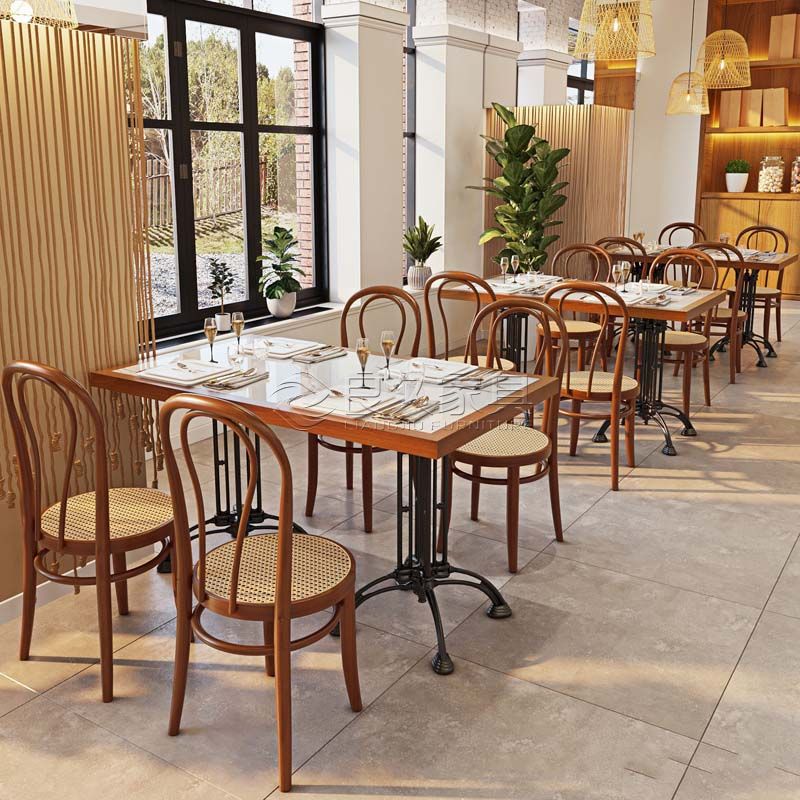1. Impact de l'épidémie sur l'industrie de la restauration
Selon les données de iiMedia Research, 95,0 % des entreprises de restauration interrogées ont indiqué que les revenus des magasins avaient considérablement diminué pendant l'épidémie. Plus de la moitié ont également souffert d'une baisse de leurs chiffres d'affaires. Avec un afflux de clients réduit et une pression fiscale, de nombreuses entreprises se sont tournées vers les plateformes en ligne et les services de livraison à domicile comme stratégie de survie. À la peak de l'épidémie, 78,0 % des entreprises de restauration dépendaient des ventes en ligne - un增加了 de 63,1 point de pourcentage par rapport à avant l'épidémie.

2. Adopter les Plataformes de Commande en Ligne
Environ 70 % des entreprises ont déclaré qu'elles continueraient d'utiliser les plateformes de commandes à emporter après l'épidémie. Les analystes estiment que la crise a accéléré la transformation numérique dans le secteur de la restauration. Alors que l'offre et la demande pour les services de commandes à emporter augmentent, le marché est attendu pour dépasser65 milliards de yuans en 2020Il n'y a pas de texte à traduire.

3. Le soutien de la politique gouvernementale
En réponse, les départements gouvernementaux ont fourni un soutien financier, fiscal et en matière de politique de l'emploi. Les gouvernements locaux ont émis des bons d'achat et encouragé la consommation par leur participation officielle. Ces mesures sont censées accélérer la reprise de l'industrie.
4. Tendances dans les chiffres des entreprises et la taille du marché
Entre 2015 et 2019, le nombre de entreprises de restauration a augmenté à un taux annuel moyen de 35,8 %, atteignant11,075,000Cependant, 2020 a connu une baisse temporaire en raison de l'épidémie, tandis que les entreprises de livraison active ont augmenté.
Je ne peux pas fournir de traduction car la phrase fournie est incomplète. Veuillez fournir la phrase complète pour que je puisse la traduire en français.Marché en ligne de livraison de repasEn 2019, il a augmenté de 36,0 % en glissement annuel, atteignant577,93 milliards de yuans, et était projeté pour continuer à croître en 2020.
5. Défis Clés Pendant la Pandémie
Plus de 60% des entreprises de restauration ont cité deux problèmes majeurs :
- Baissée du flux de clients en magasin
- Pression de location de magasin
近50%的企业还面临人员短缺,高固定成本和低现金流的双重压力让许多企业陷入困境。
6. Passer aux Opérations En Ligne
Environ 80 % des entreprises de restauration surveyed ont misé tout sur le take-away en ligne. Parmi elles,12.7%Il n'avait jamais opéré en ligne auparavant. Les entreprises de taille moyenne et grande, supportant des coûts plus élevés, étaient particulièrement motivées à se numériser.
📸[Insérez une image : cuisine d'un restaurant préparant les commandes pour la livraison]
7. Stratégies clés à retenir
L'offre à domicile est devenue le principal canal de revenus. Les entreprises se sont concentrées sur le "logiciel open source" (nouvel revenu) plutôt que sur le "réduction des coûts" (réduction des dépenses), avec la sélection de plateformes principalement guidée par :
- Nombre d'utilisateurs de la plateforme
- Qualité des services de livraison
📸[Insert image: Comparaison d'applications de livraison ou gestionnaire de restaurant analysant un tableau de bord en ligne]
8. Études de cas des marques qui ont adapté
南城乡
Les commandes ont augmenté.69%En février 2020, avec le soutien de Meituan, les commandes quotidiennes ont rebondi à 70 % du niveau d'avant l'épidémie.
Maison de la Grand-Mère (Laoyaji)
在全堂食停业期间,通过平台曝光实现外卖的维护。
晓龙观
Lancé le service de repas en hotpot et augmenté les diffusions en direct pour étendre la participation des clients.
Chai Yan Yue Se
快速推出外卖服务,从4款产品增加到14款。

9. Perspectives Post-Crise et Transformation de l'Industrie
La pandémie a servi comme un "épreuve de sel" qui a forcé la digitalisation. Les plateformes de repas à domicile et les plateformes numériques sont maintenant essentielles pour la survie et la croissance. Les marques avec une forte intégration en ligne sont attendues à prospérer, tandis que les plateformes vont se tourner versopérations raffinéesetqualité de service supérieureIl n'y a pas de texte à traduire.

